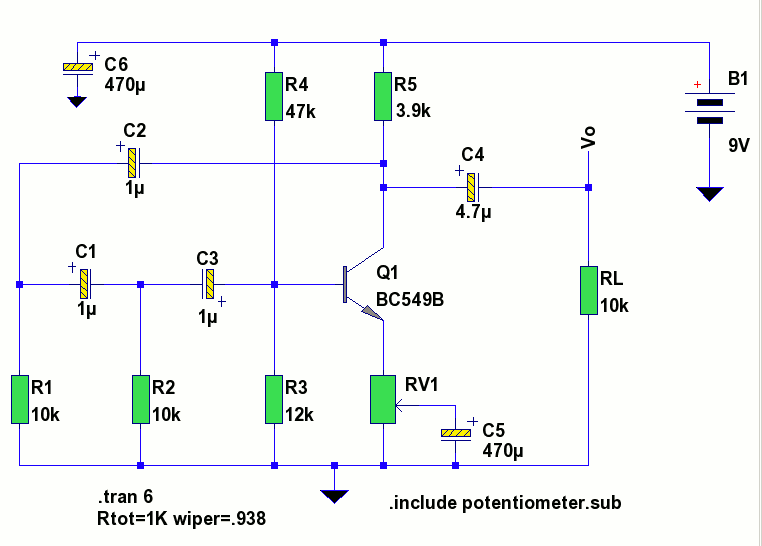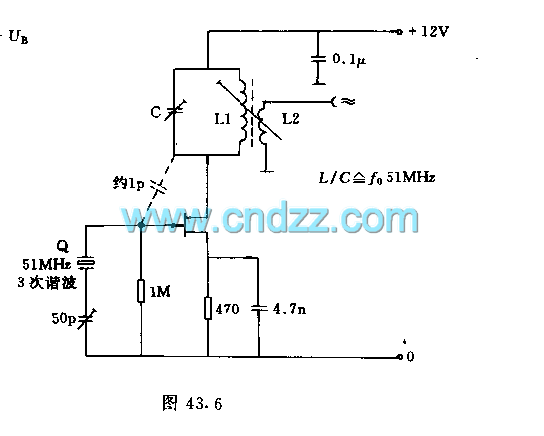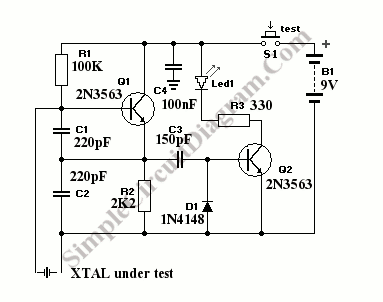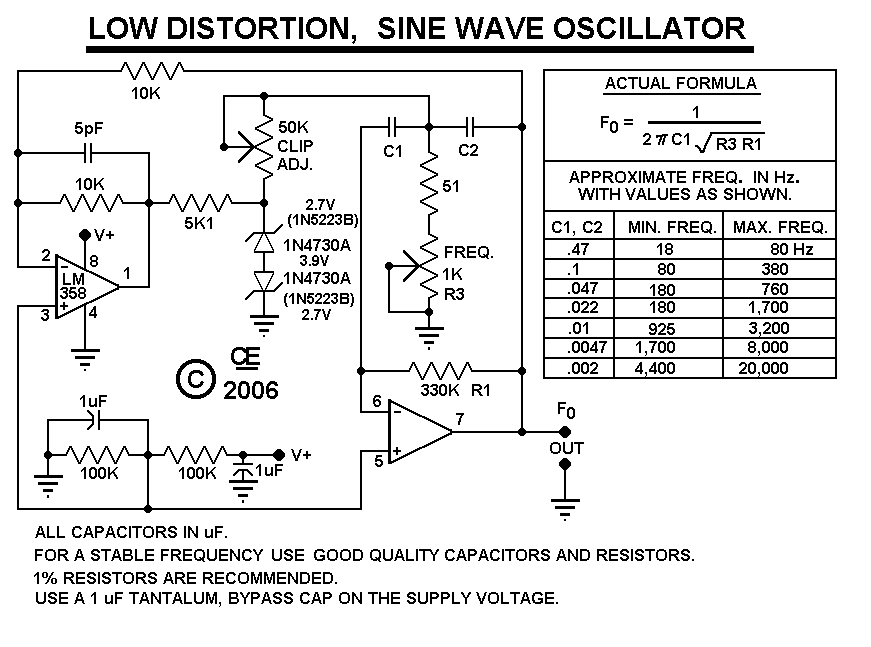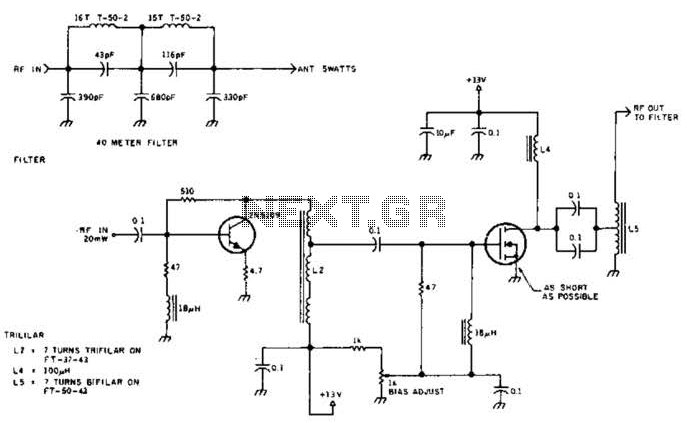
COLPITTS 1 To 20 MHz Crystal Oscillator
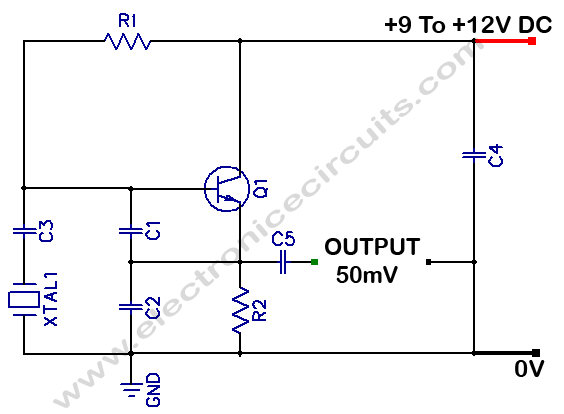
Colpitts 1 MHz to 20 MHz Crystal Oscillator Circuit. This is a simple Colpitts crystal oscillator designed for frequencies ranging from 1 MHz to 20 MHz.
The Colpitts oscillator is a type of electronic oscillator that uses a combination of capacitors and an inductor to produce oscillations. In this particular circuit, the oscillator is configured to operate within the frequency range of 1 MHz to 20 MHz, making it suitable for various applications including signal generation and frequency modulation.
The core components of the Colpitts oscillator include a transistor, which acts as the active amplifying element, and a tank circuit comprising an inductor and two capacitors. The values of these components determine the oscillation frequency. The tank circuit is crucial as it sets up the resonant frequency, which can be calculated using the formula:
\[ f = \frac{1}{2\pi\sqrt{LC}} \]
where \( f \) is the frequency, \( L \) is the inductance in henries, and \( C \) is the total capacitance in farads. The capacitors are typically arranged in series and parallel configurations to achieve the desired capacitance value.
The circuit may also include additional components such as resistors for biasing the transistor and ensuring stable operation, as well as a power supply to provide the necessary voltage to the circuit. It is important to select components that can handle the frequency range specified, ensuring minimal phase noise and distortion during oscillation.
In practical applications, the output of the Colpitts oscillator can be used to drive other circuits, serve as a clock signal for digital systems, or be modulated for communication purposes. The design is favored for its simplicity and effectiveness in generating stable frequencies over a wide range. Proper layout and shielding techniques should be employed to minimize interference and maintain signal integrity in high-frequency operations.Colpitts 1MHz To 20 MHz Crystal Oscillator Circuit This is a simple Colpitts crystal oscillator for 1 to 20 MHz, PARTS.. 🔗 External reference
The Colpitts oscillator is a type of electronic oscillator that uses a combination of capacitors and an inductor to produce oscillations. In this particular circuit, the oscillator is configured to operate within the frequency range of 1 MHz to 20 MHz, making it suitable for various applications including signal generation and frequency modulation.
The core components of the Colpitts oscillator include a transistor, which acts as the active amplifying element, and a tank circuit comprising an inductor and two capacitors. The values of these components determine the oscillation frequency. The tank circuit is crucial as it sets up the resonant frequency, which can be calculated using the formula:
\[ f = \frac{1}{2\pi\sqrt{LC}} \]
where \( f \) is the frequency, \( L \) is the inductance in henries, and \( C \) is the total capacitance in farads. The capacitors are typically arranged in series and parallel configurations to achieve the desired capacitance value.
The circuit may also include additional components such as resistors for biasing the transistor and ensuring stable operation, as well as a power supply to provide the necessary voltage to the circuit. It is important to select components that can handle the frequency range specified, ensuring minimal phase noise and distortion during oscillation.
In practical applications, the output of the Colpitts oscillator can be used to drive other circuits, serve as a clock signal for digital systems, or be modulated for communication purposes. The design is favored for its simplicity and effectiveness in generating stable frequencies over a wide range. Proper layout and shielding techniques should be employed to minimize interference and maintain signal integrity in high-frequency operations.Colpitts 1MHz To 20 MHz Crystal Oscillator Circuit This is a simple Colpitts crystal oscillator for 1 to 20 MHz, PARTS.. 🔗 External reference
